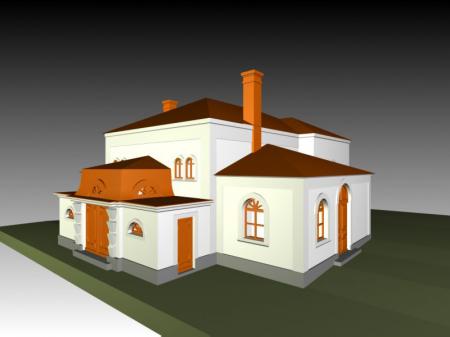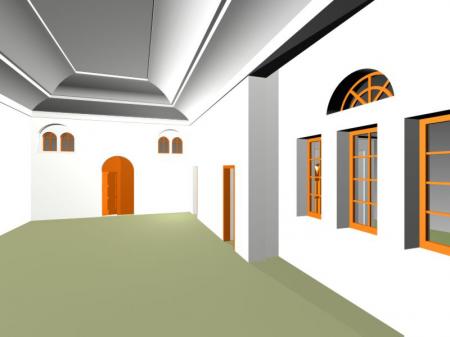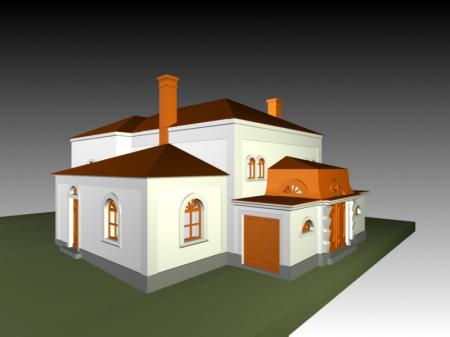Obj. ID: 17521
Jewish Architecture Cemetery chapel in Chemnitz, Germany - 3D computer model, stage of 1924
To the main object: Cemetery Chapel in Chemnitz, Germany

From 1924 to 1928, the main hall was enlarged towards the west, nearly doubling in size (inner measurements: 6.70 x 6.70 5.10 x 8.70 m [full-length 11.70 m]), with a large new polygonal apse (3.00 x 5.10 m). The two flanking wings remained the same size as in the building of 1882, though doors were opened in the south wing. The ceiling was changed from a mirrored vaulting to a double mirrored one. In the east facade, a vestibule was added (2.10 x 2.80 m), flanked by two small service rooms (2.00 x 1.80 m each). These seem to be an afterthought, because they do not feature in the original enlargement plan. Moreover, the fact that the front socle of the vestibule continues from its south corner to the inner wall of its adjacent south room suggests, that the vestibule was built first, before the planning of the side rooms. Another significant change of plan is seen in the large apse, which received an upper round window instead of an elongated narrow window on either side.
The east facade has an entrance door to the vestibule, with a semi-round window on either side, for the two added service rooms. Two upper twin windows flank the roof of the vestibule, which has semi-round windows fixed in its three sides. The side wings each retain the large, arched window.
The addition to the main hall has on the north and south walls a triple window, its central part topped by a semi-round one. The two chimneys, which jut each from the north and south common walls of the main hall and adjacent wings, were shortened.
On the west wall, the polygonal apse has a round window, and the side wings have each a large arched window.
On the south wall, a door was opened in the apse, another in one of the rooms of the south wing, and yet another in the south wall of the vestibule’s service room. In addition, connecting doors were added in the south wing between the two rooms and towards the main hall.
On the north wall, the cleansing room retained the exit door and the window in the adjacent room. Another door is on the north wall of the vestibule’s second service room.
Lending a unified impression to the building is the cornice on the added part of the main hall, which joins that of the wings and apse. The hipped roof of the main hall and the half-hipped of the wings consist of a wooden paneled construction covered by slate.














